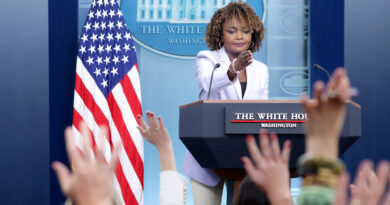Key Inflation Indicator from the Fed Rises for the Second Consecutive Month
Goods inflation has decelerated, whereas service prices surged.
The inflation measure preferred by the Federal Reserve, known as the personal consumption expenditure (PCE) price index, experienced an increase for the second consecutive month as ongoing pricing pressures influence the central bank’s monetary policy approaches.
Compared to last year, goods inflation decreased by 0.4 percent, while prices for services surged by 3.8 percent. Additionally, food prices rose by 1.4 percent year-on-year, while energy prices experienced a decline of 4 percent.
From October to November, the PCE price index increased by 0.1 percent.
Core PCE inflation, which excludes the more volatile food and energy sectors, remained stable at 2.8 percent, slightly below the consensus forecast of 2.9 percent. On a monthly basis, core PCE rose by 0.1 percent.
According to BEA data, personal income increased at a slower-than-anticipated rate of 0.3 percent, a decline from the upwardly revised 0.7 percent observed in October.
Personal spending increased by 0.4 percent, falling short of the 0.5 percent forecast, up from 0.3 percent the previous month, according to the BEA.
Market Reaction
U.S. stocks remained in negative territory before the market opened, with major indices dipping as much as 0.9 percent.
Treasury yields mostly decreased as the trading week came to a close. The yield on the 10-year Treasury dropped to 4.5 percent, while the 2- and 30-year yields fell to 4.25 percent and 4.7 percent, respectively.
The U.S. dollar index, which measures the dollar against a basket of currencies, dropped below 108.00. It is still on track for a weekly gain of approximately 0.8 percent, contributing to its rally of 6.5 percent year-to-date.
“The market is reacting poorly,” noted Chris Zaccarelli, chief investment officer at Northlight Asset Management, in a message sent to The Epoch Times on Dec. 20.
Nonetheless, the lower-than-anticipated PCE inflation data helped mitigate some losses. Zaccarelli believes that the concluding moments of the trading session on Dec. 20 will be significant to observe.
“If selling continues throughout the day and there’s momentum (to the downside) leading into the weekend, that could indicate a negative trend for the following week; however, if we see some buying later today and the market closes significantly higher than its intraday lows, that would create a more positive outlook for next week,” he stated.
The Persistence of Inflation
The upcoming release of inflation data is expected to reflect the upward trend seen since the October figures.
For December, PCE and core PCE inflation are predicted to be at 2.8 percent and 3 percent, respectively.
These figures still exceed the central bank’s 2 percent inflation target, which Fed Chair Jerome Powell acknowledged during his press conference this week, stating that the United States is still “a year or two” from reaching that target.
As a result of the continuing inflation pressures above the trend, the Fed has indicated fewer rate cuts ahead of 2025.
“I believe we are in a favorable position, but entering this next phase, we must be cautious regarding additional cuts,” Powell commented, expressing disappointment over the stagnant inflation rate observed in recent months.
“Common sense suggests that when the future is uncertain, one should proceed more cautiously. It’s comparable to driving through fog or navigating a dimly lit room,” he added.
Officials are anticipating a reduction in price pressures over the coming years. The revised December Summary of Economic Projections indicates that the median PCE inflation rate is expected to decline to approximately 2 percent by 2026 and beyond.
The uncertainty may be influenced by President-elect Donald Trump’s proposed tariffs. While the Fed has not preemptively implemented policy changes in response to the incoming administration’s economic initiatives, Powell noted that he and his colleagues are starting to assess the potential impacts of increased tariffs, tax reductions, and immigration policies in the coming years.
Although Powell expressed confidence that inflation pressures would lessen, he acknowledged that central bank staff and policy makers are beginning to tentatively consider the potential economic impacts of Trump’s promised tariffs, tax cuts, and stricter immigration policies in their forecasts.
“Some officials have taken an initial step to integrate conditional estimates regarding the economic impacts of these policies into their projections during this meeting,” Powell informed reporters.
Byron Anderson, head of Fixed Income at Laffer Tengler Investments, questioned the necessity of the Fed’s continued interest rate cuts.
“Inflation remains significantly above target, unemployment rates are stagnant, and yet the Fed persists in lowering rates,” Anderson pointed out in a message to The Epoch Times. “I find myself asking: which of its dual mandates is it trying to protect the economy from with these cuts?”
Anderson believes that the Fed should have considered pausing the rate-cutting cycle following the presidential election.
“The appropriate time to take a pause was right after Trump’s electoral victory to observe the implications of his administration,” he said. “Changes and volatility are anticipated with Trump at the helm, and the Fed may need to reassess and could risk losing credibility with the markets.”
The next Federal Open Market Committee policy meeting is scheduled for Jan. 31 and Feb. 1.




